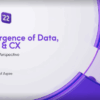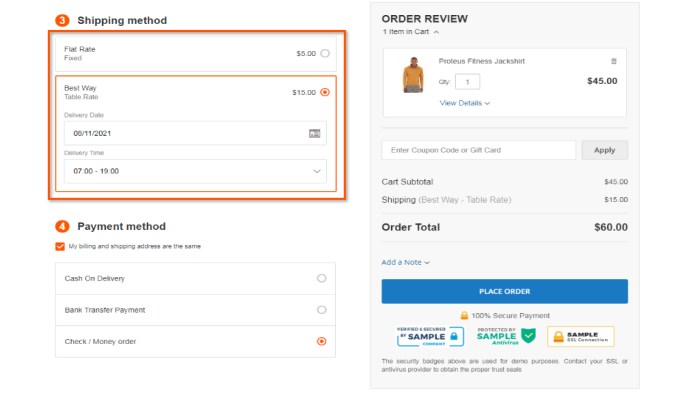Discovering your target audience for marketing success is crucial for any business hoping to thrive in today’s competitive market. It’s not just about knowing who your potential customers are, but deeply understanding their needs, motivations, and behaviors. This journey of discovery will unlock powerful insights into how to tailor your marketing efforts, leading to increased engagement, higher conversions, and ultimately, greater profitability.
This guide will take you through the essential steps of identifying your ideal customers, from defining their characteristics to crafting a tailored marketing strategy that resonates with their desires. We’ll explore research methods, segmentation techniques, and strategies for understanding their behaviors, all culminating in a data-driven approach to marketing success.
Researching Your Target Audience: Discovering Your Target Audience For Marketing Success
Understanding your target audience is crucial for marketing success. It’s not enough to simply know who you’re selling to; you need a deep understanding of their needs, motivations, and behaviors. Thorough research provides insights that can inform every aspect of your marketing strategy, from crafting compelling messaging to selecting the right channels. This detailed exploration of research methods allows you to tailor your approach to resonate with your audience and achieve your business objectives.Effective marketing relies on knowing your audience intimately.
This knowledge empowers you to develop strategies that precisely meet their needs and desires, ultimately leading to increased engagement and conversions. A well-researched target audience profile translates into a more effective and efficient marketing campaign.
Methods for Target Audience Research
Various methods can be used to gain a comprehensive understanding of your target audience. This section explores the most common and effective approaches.
- Surveys are a powerful tool for gathering quantitative data. They can be used to collect information on demographics, preferences, and purchasing habits. Surveys can be distributed online through platforms like SurveyMonkey or Google Forms, or via email or paper questionnaires. Well-structured surveys ensure accurate data collection.
- Interviews provide qualitative insights into the motivations and behaviors of your target audience. These one-on-one conversations offer an opportunity to delve deeper into their experiences and perspectives. Interviews can be conducted in person, over the phone, or via video conferencing. Key insights emerge from open-ended questions that elicit detailed responses.
- Social media analysis allows you to track conversations, trends, and sentiments surrounding your brand and industry. Platforms like Twitter, Instagram, and Facebook provide valuable insights into how your target audience perceives your brand and competitors. Careful monitoring of online discussions reveals crucial information for refining marketing strategies.
Gathering Data from Various Sources
Collecting data from different sources is essential for a comprehensive understanding. Combining quantitative and qualitative data provides a richer, more nuanced picture of your target audience.
- Combining survey responses with interview transcripts allows for a more holistic understanding. Surveys offer broad demographic data, while interviews provide context and motivations behind those responses. Integrating these diverse data sources is essential for marketing strategy.
- Secondary research, such as industry reports and market analysis, provides valuable background information and context. Utilizing existing data can save time and resources while offering critical perspectives. Analyzing this data provides valuable background information on trends and competitors.
Example Questions for Surveys and Interviews
Crafting effective questions is crucial for obtaining detailed and insightful information.
Figuring out who your ideal customer is crucial for marketing success. Understanding your target audience is key, but staying ahead of the curve also involves embracing digital transformation, which is vital for any business. Digital transformation what is it and why is it important impacts how you connect with your audience, so adapting to these changes will help you understand their needs and preferences better.
Ultimately, knowing your target audience remains the cornerstone of effective marketing strategies.
- Survey questions should be clear, concise, and focused on specific aspects of your target audience. Questions should be designed to avoid ambiguity and provide accurate and meaningful responses.
- Example: “On a scale of 1 to 5, how satisfied are you with our product’s customer service?”
- Example: “What are the three most important factors you consider when purchasing a product like ours?”
- Interview questions should be open-ended and encourage detailed responses. These questions are designed to delve deeper into the reasons behind responses, revealing motivations and underlying needs.
- Example: “Can you tell me about your experience with our product in the last month?”
- Example: “What are your biggest concerns about using products like ours?”
Comparison of Market Research Tools and Techniques
Different tools and techniques offer various advantages and disadvantages. Understanding these differences allows you to choose the most suitable approach for your needs.
- Quantitative methods, like surveys, provide numerical data, enabling statistical analysis and identification of trends. These methods allow for broad generalizations.
- Qualitative methods, like interviews, provide rich, detailed insights into motivations and behaviors. These methods offer valuable context for understanding complex human experiences.
Analyzing Collected Data
Analyzing collected data is a critical step in the research process. Identifying patterns and insights is crucial for developing effective marketing strategies.
Figuring out your ideal client is key to marketing success. Understanding your target audience isn’t just about demographics; it’s about delving into their motivations and pain points. This is where the new science of professional services marketing comes in handy. The new science of professional services marketing explores data-driven strategies to pinpoint your ideal clients, allowing for a more focused and effective approach.
Ultimately, knowing your target audience is the bedrock of any successful marketing campaign.
- Data analysis tools, such as spreadsheets and statistical software, are employed to identify patterns and relationships in the data. Proper analysis allows for meaningful interpretation and insights into the collected data.
- Looking for recurring themes and trends in the data helps to pinpoint key insights. This process helps to reveal the underlying motivations and needs of the target audience.
Steps in Conducting Market Research
A structured approach to market research ensures efficiency and accuracy.
| Step | Description |
|---|---|
| Data Collection | Gathering information from various sources, including surveys, interviews, and social media analysis. |
| Data Analysis | Using tools and techniques to identify patterns, trends, and insights in the collected data. |
| Interpretation | Drawing conclusions and recommendations based on the analyzed data, leading to a deeper understanding of the target audience. |
Segmenting Your Target Audience
Knowing your target audience is crucial for marketing success, but a broad audience can be overwhelming. Segmenting your target audience into smaller, more manageable groups allows for tailored marketing strategies that resonate with specific needs and desires. This targeted approach boosts engagement and increases the likelihood of conversion.Segmenting a broad audience allows for a more effective and efficient allocation of marketing resources.
By focusing on specific groups within the larger audience, you can create highly targeted campaigns that speak directly to their unique characteristics and motivations. This precision marketing increases the ROI of your campaigns, leading to higher conversion rates and a stronger return on investment.
Demographic Segmentation
Understanding demographic characteristics is a foundational aspect of audience segmentation. Demographics include age, gender, location, income, education, occupation, and family status. This approach allows you to tailor messaging and products to specific demographic groups. For example, a company selling high-end fashion might target a higher-income demographic with a sophisticated marketing campaign, while a company selling budget-friendly products might focus on a wider income range.
- Age: Tailoring marketing campaigns to different age groups requires recognizing varying preferences and interests. For instance, a social media platform targeting teenagers might use a different tone and visual style compared to one targeting older adults.
- Gender: Products and services are often tailored to gender-specific needs and interests. This can involve different marketing channels and messaging strategies, such as utilizing different imagery and language to attract male and female customers.
- Location: Localizing marketing efforts to different geographical areas is crucial for effective campaigns. Consider cultural nuances and preferences when designing campaigns for specific regions or countries.
Psychographic Segmentation, Discovering your target audience for marketing success
Psychographic segmentation delves deeper into the psychological aspects of your audience. This involves understanding their values, attitudes, interests, lifestyles, and personality traits. Understanding these factors allows for more personalized messaging that resonates with the audience’s core values and beliefs.
- Values: Understanding the values of your target audience allows you to align your brand messaging with those values, creating a stronger connection and fostering trust. A company prioritizing environmental sustainability might focus on marketing campaigns that emphasize eco-friendly practices.
- Interests: Identifying common interests within your target audience helps you create content and campaigns that engage them on a deeper level. For instance, a company targeting fitness enthusiasts might create content about workout routines and healthy recipes.
- Lifestyle: Consider how your target audience spends their time and what their priorities are. A company targeting busy professionals might emphasize time-saving products or services.
Behavioral Segmentation
Behavioral segmentation focuses on the actions and purchasing patterns of your target audience. This includes factors like purchase history, website activity, engagement with social media, and brand loyalty. Analyzing this data helps to understand the motivations and behaviors of your target audience.
- Purchase History: Understanding past purchases allows you to tailor recommendations and upselling opportunities to existing customers. Analyzing purchase patterns can reveal preferences and needs, helping to personalize future interactions.
- Website Activity: Website analytics provide valuable insights into how customers interact with your website. Identifying areas of engagement and friction points helps you improve user experience and conversion rates.
- Brand Loyalty: Recognizing and rewarding loyal customers helps to build strong relationships and encourage repeat business. Offering exclusive rewards and personalized communication to loyal customers strengthens their connection with your brand.
Prioritizing Target Audience Segments
After segmenting your audience, prioritize segments based on their potential for conversion. Consider factors like market size, purchasing power, and engagement level. A segment with a large market size and high purchasing power is likely to yield a greater return on investment.
Target Audience Segmentation Table
| Segment | Characteristics | Potential Value |
|---|---|---|
| High-Income Professionals | High disposable income, value efficiency, appreciate quality | High conversion potential due to purchasing power |
| Millennial Parents | Focus on family values, technology-savvy, value convenience | Potential for converting to repeat customers |
| Budget-Conscious Students | Limited disposable income, value affordability, seek deals | Potential for conversion with promotional offers |
Understanding Target Audience Needs and Behaviors

Knowing your target audience isn’t just about demographics; it’s about deeply understanding their needs, motivations, and behaviors. This crucial step allows you to tailor your marketing efforts, crafting messages that resonate, and ultimately, drive conversions. By understanding their pain points, desires, and the factors influencing their purchasing decisions, you can build stronger relationships and achieve marketing success.Understanding your target audience’s needs and motivations is fundamental to effective marketing.
This involves more than just knowing their age or location. It’s about recognizing their aspirations, challenges, and the factors that influence their choices. This deep understanding empowers you to craft targeted messaging that resonates with their specific needs and desires.
Identifying Customer Pain Points and Desires
Understanding customer pain points and desires is key to effective marketing. This involves actively seeking out and understanding the problems your target audience faces. Researching their needs and desires provides valuable insights that can guide the development of marketing strategies that address their issues directly.Customer pain points can be identified through various methods, including surveys, interviews, focus groups, and analyzing customer reviews.
These methods help uncover the specific challenges customers encounter in relation to your product or service. For instance, a survey could reveal that a common pain point for potential customers is the difficulty of navigating a website.
Uncovering Motivations Behind Purchasing Decisions
Understanding the motivations behind purchasing decisions is crucial for aligning your marketing efforts with the factors that drive customer choices. This understanding enables you to tailor marketing messages that directly appeal to these motivations.Motivations are often complex, involving a combination of rational and emotional factors. For example, a customer might choose a product based on its functional benefits (e.g., durability) but also on its emotional appeal (e.g., feeling stylish).
Analyzing these motivations provides insight into what truly drives customer purchasing behavior.
Identifying and Understanding Audience Behavior
Understanding audience behavior provides valuable insights into how your target audience interacts with your brand and products. This includes examining their online activity, purchasing patterns, and responses to marketing communications.Analyzing online behavior, such as website traffic patterns and social media engagement, reveals valuable insights into how customers interact with your brand. For instance, if many users are abandoning your online checkout process, you might identify a problem with the checkout flow and implement improvements.
Similarly, observing purchasing patterns, such as the products customers frequently buy together, can help you create more effective product bundles.
Knowing your target audience is key to marketing success. But sometimes, brainstorming feels stale. Need a creative boost? Check out this awesome article on how to get inspired for your social media marketing campaigns, like running low on creative juice get some social inspiration make it big. Once you’ve got the creative juices flowing, you can tailor your marketing messages to resonate with your ideal customer.
This targeted approach is what really makes a difference.
Analyzing Customer Journeys and Touchpoints
Analyzing customer journeys and touchpoints is vital for understanding the complete customer experience. A customer journey map visually represents the steps a customer takes from initial awareness to final purchase, providing a comprehensive view of the customer experience. Identifying key touchpoints—the specific moments a customer interacts with your brand—helps you optimize the experience at each stage.
| Stage of Customer Journey | Potential Touchpoints |
|---|---|
| Awareness | Social media ads, search engine results, industry publications, word-of-mouth |
| Consideration | Product demos, case studies, online reviews, product comparison pages, personalized email campaigns |
| Decision | Free trials, product demonstrations, pricing information, customer testimonials, purchase process |
| Action | Order confirmation, shipping updates, post-purchase surveys, loyalty programs, upselling/cross-selling opportunities |
| Advocacy | Customer feedback requests, community forums, social media shoutouts, referral programs |
Developing a Marketing Strategy Tailored to Your Audience
Knowing your target audience is just the first step. A truly effective marketing strategy hinges on tailoring your approach to resonate with the specific needs, desires, and behaviors of different segments within your audience. This involves crafting unique messaging, selecting appropriate channels, and building meaningful relationships that foster brand loyalty.A one-size-fits-all approach to marketing rarely works. Recognizing the nuances within your target audience allows you to create campaigns that are far more impactful, leading to higher engagement and ultimately, better conversion rates.
This approach requires a deep understanding of your audience’s preferences and motivations, allowing you to craft targeted messages that speak directly to their concerns and aspirations.
Tailoring Messaging to Different Segments
Understanding the diverse needs and motivations of your target audience segments is critical to crafting compelling messaging. For instance, a marketing message designed for environmentally conscious millennials might emphasize sustainability and ethical sourcing, while a message targeting senior citizens might focus on convenience and reliability. Effective messaging must connect with the specific values and priorities of each segment.
Choosing the Right Marketing Channels
Different channels cater to different audiences. Social media platforms like Instagram and TikTok are excellent choices for reaching younger demographics, while email marketing might be more effective for nurturing relationships with existing customers or prospects. Selecting the right channels ensures your message reaches the intended audience, maximizing impact.
Building Brand Awareness and Loyalty
Building brand awareness and loyalty involves consistently delivering value to each segment. This could involve offering exclusive content, running targeted promotions, or providing personalized customer service. Regular engagement and positive experiences create lasting relationships with your audience, fostering brand loyalty and advocacy.
Optimizing Campaigns for Engagement and Conversions
Optimizing campaigns involves tracking key metrics such as click-through rates, conversion rates, and engagement levels. Analyzing this data allows you to refine your messaging, targeting, and channels to maximize results. Regularly monitoring and adjusting your strategy ensures your campaigns remain effective and aligned with your audience’s evolving needs.
Comparison of Marketing Channels
| Marketing Channel | Suitability for Audience Segment | Explanation |
|---|---|---|
| Social Media (Instagram, TikTok) | Younger demographics (Gen Z, Millennials) | Highly visual and engaging platforms ideal for showcasing products and building a community. |
| Email Marketing | Existing customers, prospects | Excellent for nurturing leads, providing updates, and promoting exclusive offers. |
| Search Engine Optimization () | Individuals actively searching for products/services | Drives organic traffic by optimizing website content for relevant s. |
| Paid Advertising (Google Ads, Social Media Ads) | Specific interests/demographics | Targeted approach to reach a wider audience with tailored ads. |
| Influencer Marketing | Specific niches/interests | Leveraging influential personalities to promote products/services to their followers. |
Measuring and Evaluating Marketing Effectiveness
Knowing your audience is crucial, but understandinghow* your marketing efforts resonate with them is equally vital. Measuring the performance of your campaigns allows you to refine your strategies, optimize resource allocation, and ultimately, achieve better results. This process of continuous evaluation and adjustment is key to long-term marketing success.Effective marketing isn’t a one-and-done project; it’s a dynamic process that demands constant monitoring and refinement.
Tracking campaign performance across different segments enables you to understand what’s working and what’s not, tailoring your approach to maximize impact. This data-driven approach helps avoid wasting resources on ineffective strategies and guides you towards better ROI.
Tracking Campaign Performance Across Audience Segments
Understanding the effectiveness of your marketing efforts requires a comprehensive approach. Different segments may respond differently to various campaigns, so it’s essential to track performance for each. Utilize unique identifiers or tags to distinguish campaign interactions and responses by audience segment. This granular approach allows for tailored analysis and optimization.
Measuring Key Metrics
Several key metrics provide valuable insights into campaign performance. These metrics, carefully tracked and analyzed, paint a comprehensive picture of campaign success.
- Engagement: Metrics like website visits, click-through rates (CTRs), time spent on a page, and social media interactions provide valuable insights into audience engagement. Higher engagement often indicates a stronger connection with the message, signifying that the campaign is resonating with the target audience.
- Conversion Rates: The percentage of users who complete a desired action, such as making a purchase or signing up for a newsletter, is crucial. This data reveals the effectiveness of the campaign in driving desired outcomes. A high conversion rate signifies a strong call to action and successful engagement with the target audience.
- Return on Investment (ROI): Calculating the ROI helps determine the profitability of marketing campaigns. This metric quantifies the profit generated for every dollar invested in the campaign. A positive ROI indicates a successful campaign, while a negative ROI signals areas for improvement or potential adjustments in strategy.
Analyzing Data for Improvement
Regularly analyzing the data collected from various sources is vital for identifying areas for improvement.
- Identifying Trends: Patterns in engagement, conversion, and ROI data across different segments help pinpoint effective and ineffective strategies. For instance, a particular campaign might perform exceptionally well with a specific demographic but poorly with another.
- Comparative Analysis: Comparing the performance of different campaigns, across different segments, allows for informed decision-making about resource allocation and strategy refinement. Analyzing which campaigns are generating the highest ROI can guide future investments.
- A/B Testing: Testing different variations of a campaign (e.g., different headlines, images, or calls to action) with specific segments helps determine which elements are most effective. This data-driven approach optimizes campaign elements for maximum impact.
Adjusting Marketing Strategies Based on Performance Data
Analyzing the data collected enables you to make strategic adjustments to your marketing strategies.
- Refocusing Campaigns: If a campaign isn’t performing as expected, analyzing data allows for refocusing efforts on segments where engagement and conversion are stronger. This ensures optimal resource allocation.
- Optimizing Messaging: Adjusting messaging based on audience response is vital. If a specific message isn’t resonating, altering the tone, style, or content of the message can enhance engagement and conversion.
- Targeted Campaigns: Understanding which segments respond best to specific campaigns allows for more targeted campaigns that maximize impact. Tailoring messages to specific interests and needs is a critical component of success.
Importance of Ongoing Evaluation and Refinement
The marketing landscape is constantly evolving, demanding continuous evaluation and refinement of strategies.
- Adaptability: Staying ahead of the curve involves adapting to shifts in consumer behavior, preferences, and market trends.
- Iterative Process: Regularly reviewing and updating campaigns based on performance data ensures continued improvement and optimized results.
- Maintaining Relevance: Maintaining relevance is crucial for connecting with your target audience. By monitoring performance and adapting to their changing needs, you keep your message fresh and engaging.
Key Performance Indicators (KPIs) Tracking Table
| Campaign Name | Audience Segment | Engagement Rate | Conversion Rate | ROI | Date |
|---|---|---|---|---|---|
| Social Media Campaign A | Gen Z | 85% | 15% | 120% | 2024-03-15 |
| Email Marketing Campaign B | Millennials | 70% | 10% | 95% | 2024-03-15 |
| Paid Advertising Campaign C | High-Income Professionals | 60% | 20% | 115% | 2024-03-15 |
Wrap-Up

In conclusion, mastering the art of discovering your target audience is a cornerstone of successful marketing. By understanding their needs, motivations, and behaviors, you can create campaigns that truly connect with them. This detailed exploration of defining, researching, and segmenting your audience provides the roadmap for developing a targeted marketing strategy that leads to greater returns. Remember, a deep understanding of your target audience is an ongoing process of refinement and adaptation, crucial for maintaining a competitive edge.





